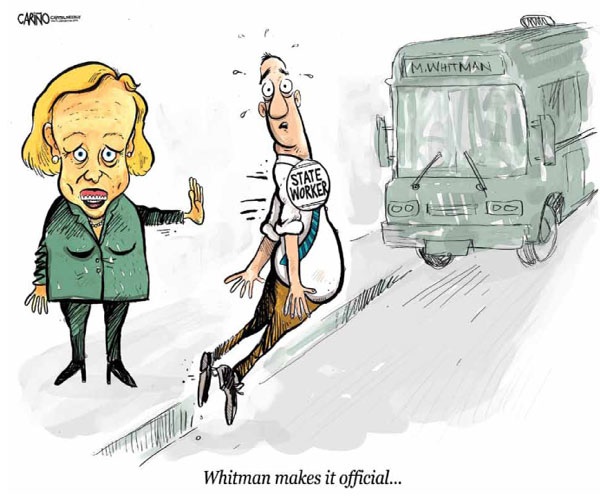November 23, 2009 2009-002.1b(Letter Report)The Governor of CaliforniaPresident pro Tempore of the SenateSpeaker of the AssemblyState CapitolSacramento, California 95814Dear Governor and Legislative Leaders:On February 17, 2009, the President signed the American Recovery and Reinvestment Actof 2009 (Recovery Act) to help fight the negative effects of the United States’economic recession. California expects to receive $85 billion in additional federal funding over the next several years for both new and existing federal programs. With this increased funding comes a renewed emphasis on accountability and public transparency to ensure federal funds are spent properly. A key component of such accountability and transparency is the California State Auditor’s Office (State Auditor’s Office) annual report oninternal control and compliance with federal laws and regulations. The State Auditor’s Office conducts this audit in accordance with the U.S. Office of Management and Budget (OMB) Circular A-133.With the federal government awarding Recovery Act funds beginning in 2009, OMB issuedguidance dated June 2009 indicating the importance of an auditor’s early communicationto management regarding deficiencies in internal control. By recommending such earlycommunication, OMB intends for states to correct these findings as soon as possible to ensure proper accountability and transparency for expenditures of Recovery Act awards.Based on OMB’s guidance, as well as the public’s right to full transparency over the State’s spending of Recovery Act funds, the State Auditor will be issuinginterim reports that identify areas where the State can improve its administration of Recovery Act funds, while also recognizing instances when such funds were spent properly.In this interim report, the State Auditor’s Office discusses the Department of Corrections andRehabilitation’s (Corrections) administration of a portion of the State Fiscal Stabilization Fund Program—Government Services (Stabilization Funds—Federal Catalog Number 84.397) during fiscal year 2008–09. Our review found that Corrections spent its entire $726.8 million award to reimburse the General Fund for payroll expenses incurred during May and June 2009. Corrections’ use of these funds in this manner is consistent with the Recovery Act’s goals, which state that one of its main purposes is to preserve and create jobs, while other goals include assisting those most affected by the recession and stabilizing state and local government budgets. Also, according to the requirements for the State Fiscal Stabilization Fund Program, certain stabilization funds can be used for public safety.Corrections’ Use of Stabilization Funds to Reimburse Its Payroll CostsWas AppropriateThe Recovery Act provides the U.S. Department of Education (Education) with $53.6 billion to administer the State Fiscal Stabilization Fund Program. Under this program, Education can allocate funding to the states to support education and other governmental programs. The Recovery Act requires states to spend 81.8 percent of their allocation to support elementary, secondary, andpostsecondary education, while spending the remaining 18.2 percent of their allocation for public safety and other governmental services, which may include assistance for educational programs. In April 2009 the State applied for initialfunding under the State Fiscal Stabilization Fund Program. In the State’s application, the governor indicated that California would use the government services portion of its allocation by spending it all on public safety, rather than spending these funds in other areas such as transportation, public school renovation, or Medicaid. By mid-June 2009, the State had received more than $2.8 billion in stabilization funds, of which $726.8 million could be used for public safety and other government services.The Governor’s Office of Planning and Research (Planning and Research) entered into an interagency agreement with Corrections on May 6, 2009, to expend federal funds in a manner consistent with the public safety and other government services provisionoutlined in the State’s April 2009 application. Even though the agreement specified that Corrections would be spending the funds received by Planning and Research, the State’s intention was to use these funds to reimburse the General Fund, which is the funding source for Corrections’ payroll costs. Earlier in April 2009 the Department of Finance informed the Legislature that “the Administration intends to use the federal funds to replace General Fund expenditures of an equal amount in the budget of the California Department of Corrections (CDCR).”In May 2009 Corrections submitted an invoice to Planning and Research for $450 million. Corrections submitted a second invoice in June 2009 for $276.8 million. Although Corrections’ invoices did not identify which General Fund costs were being reimbursed withstabilization funds, Corrections did provide us with accounting records demonstrating that its payroll costs exceeded the amounts invoiced. We verified the accuracy of Corrections’ accounting records by comparing them with similar records at the State Controller’s Office.Corrections’ decision to use $726.8 million of State Fiscal Stabilization Fund Program funds ($450 million in May and $276.8 million in June 2009) to reimburse portions of its payrollcosts is consistent with the federal government’s requirement that these funds be spent on public safety or other governmental services. In fact, neither the Recovery Act nor the terms of the grant agreement further define the term public safety.Corrections’ mission is to enhance public safety through safe and secure incarceration of offenders, effective parole supervision, and rehabilitative strategies to reintegrate offenders into our communities. Given its public safety mission, Corrections’ decision to spend Recovery Act funds on its payroll costs is an allowable use of funds.Corrections May Have Overstated the Number of Jobs It RetainedUsing Stabilization FundsSection 1512 of the Recovery Act requires recipients of Recovery Act funds to report quarterly on the use of those funds. OMB issued guidance in June 2009, indicating that such reportingwould begin with the quarter ending September 30, 2009, and clarified that recipients under the State Fiscal Stabilization Fund Program are subject to this reporting requirement. Among the items to be reported is an estimate of the jobs created or retained by the project or activity paid for with State Fiscal Stabilization Fund Program funds. In its report submitted in October 2009 Corrections indicated that it used $1.08 billion ($726.8 million received during fiscal year 2008–09 and $358 million received in fiscal year 2009–10) to retain the jobs of 18,229 correctional officers working in adult prison facilities located throughout theState. Specifically, Corrections reported that it used the funds for payroll expenses.Federal guidelines do not currently require, nor did we, audit the information recipients must report under Section 1512. Since Corrections submitted its first Section 1512 report on October 6, 2009, our subsequent audit of fiscal year 2009–10 expenditures of federal funds will likely examine these reports in more detail. Nevertheless, in keeping with OMB’s emphasis on early communication of issues to management, we conducted a high level review of the methodology that Corrections used to report the number of jobs it retained using stabilization funds. Based on our preliminary review, we believe that Corrections may have overstated how many jobs it retained when it reported its 18,229 figure to the federal government.For the purposes of Section 1512 reporting, the federal government defines jobs retained as an existing position that would not have been continued to be filled were it not for Recovery Act funding. Corrections had issued 3,655 layoff notices on May 15, 2009, roughly one week before it received its first $450 million in stabilization funds. Various media reports indicated that Corrections issued between 1,300 and 1,450 additional layoff notices in August 2009, bringing its total layoff notices to approximately 5,000. As a result, the total number of layoff notices Corrections issued is less than one-third of the 18,229 figure that it reported to the federal government as jobs retained. Corrections explained that it had calculated its 18,229 figure by using the mid-step salary range for acorrectional officer, excluding additional overtime payments or benefits related to the position. However, such a methodology for calculating jobs retained does not seem consistent with the federal government’s definition of this term, since it appears that Corrections simply reported how many correctional officers’ salaries were paid with Recovery Act funding, regardless of whether these positions were truly at risk of being eliminated without federal funding.Respectfully submitted,ELAINE M. HOWLE, CPAState Auditor
Tuesday, November 24, 2009
CA Bureau of State Audits' review of CDCR spending of federal stimulus (inflated job saving claims, etc)
Subscribe to:
Post Comments (Atom)






























No comments:
Post a Comment